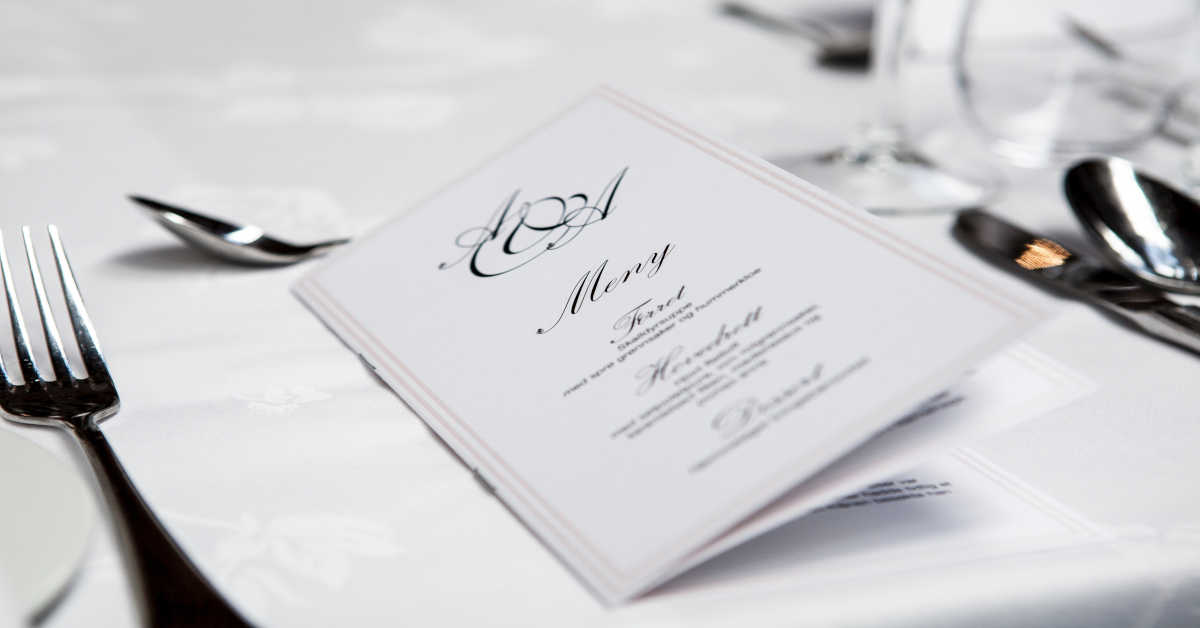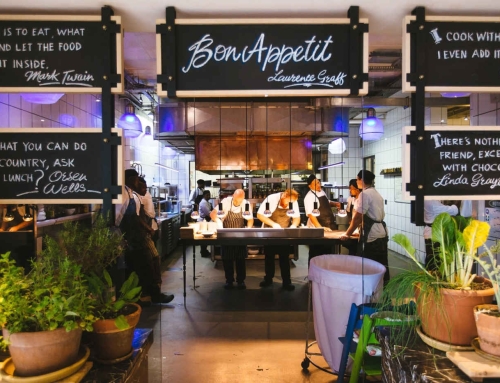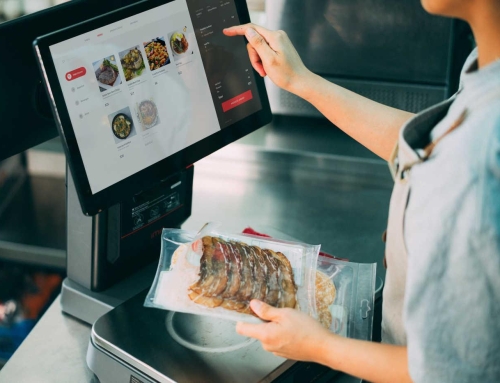Ever wonder why some restaurants seem to have a golden touch when it comes to their menu? The secret may lie in ‘Menu Engineering‘, a science that combines food cost analysis, strategic pricing and psychology to maximize profitability.
In this comprehensive guide, we’ll dissect the anatomy of a profitable menu, reveal industry insights on optimizing your restaurant’s offerings, and provide actionable steps you can take right now.
Ready for an interesting culinary journey into profits?.
Key Takeaways
- Menu engineering is a strategic process that optimizes a restaurant menu to increase profitability per guest by analyzing and categorizing menu items based on their profit margins and popularity.
- Restaurants can maximize profitability by offering tremendous value for money, upselling, and strategically placing high-margin items on the menu.
- Effective menu design, including visually appealing layouts and enticing descriptions of profitable dishes, can entice customers to spend more and increase profits.
- Understanding the four quadrants of the menu engineering matrix (STAR, DOG, PLOW HORSE, PUZZLE) can help restaurants identify which items to promote or remove from their menus to maximize profitability.
What is Menu Engineering?
Menu Engineering is the strategic process of optimizing a restaurant menu to increase profitability per guest by analyzing and categorizing menu items based on their profit margins and popularity.
Definition and purpose
Menu engineering refers to the strategic and deliberate design of a restaurant’s menu. It focuses on enhancing profitability by driving sale towards high-margin items while offering a variety of choices for guests.
The purpose is not only to maximize profits but also to create an engaging dining experience, improving customer satisfaction, loyalty, and repeat business. This approach combines culinary techniques with restaurant management skills and understanding of consumer behavior.
Increasing profitability per guest
Restaurants need to focus on maximizing profitability per guest to thrive. This strategy goes beyond just increasing the price of dishes. It starts with offering tremendous value for money, ensuring that each customer feels satisfied and gets their money’s worth.
Another key aspect is upselling, which means encouraging customers to buy more than they initially planned. Trained staff members can subtly suggest add-ons or upgrades that enhance the guests’ dining experience while boosting profits.
Selling signature cocktails or suggesting indulgent desserts are classic examples of effective upselling.
The Menu-Engineering Process
The menu-engineering process involves costing the menu, categorizing menu items based on profit and popularity, designing and laying out the menu, and testing the new design.
Costing the menu
Establishing accurate prices for each item on your menu is vital in maintaining profitability. Here are the steps to master menu costing:
- Determine the cost of each ingredient used in a dish.
- Add up these costs to find the total direct costs of producing one serving of the dish.
- Calculate indirect costs, such as labor and overhead expenses related to food preparation.
- Sum up direct and indirect costs to establish a base cost for each menu item.
- Establish a suitable percentage mark – up considering industry standards and competition.
- Determine final selling price by adding mark – up to the base cost.
- Review pricing regularly to accommodate fluctuations in ingredient costs, labor, and overheads.
Categorizing menu items based on profit and popularity
Categorize menu items based on their profitability and popularity to maximize restaurant profits. Here’s how:
- Identify high – profitability items to prioritize and promote.
- Classify low – profitability items that may need adjustment or removal from the menu.
- Analyze the popularity of each item to determine customer preferences.
- Highlight popular items to drive sales and customer satisfaction.
- Explore opportunities to improve profitability of less popular items.
- Regularly review and update categorization based on changing trends and customer feedback.
Menu design and layout
Effective menu design and layout can greatly impact the profitability of a restaurant. A visually appealing menu that is easy to navigate can entice customers to spend more, order additional items, and ultimately increase profits.
The strategic placement of high-margin items, such as signature dishes or chef specials, in prominent positions on the menu can also lead to higher sales and greater revenue. Additionally, using enticing descriptions and imagery for these profitable items can further drive customer interest and boost profitability per guest.
By considering factors like font choice, color scheme, spacing, and organization of menu sections, restaurants can create a well-designed menu that maximizes their profit potential while providing an enjoyable dining experience for customers.
Testing the new menu design
Testing the new menu design is a crucial step in menu engineering. By conducting tests, restaurant owners can gain valuable insights into customer preferences and behavior. They can evaluate how effective the new layout, descriptions, and pricing strategies are in attracting customers and increasing profitability per guest.
Through testing, restaurants can identify any areas that need improvement or adjustment to optimize the menu’s impact on sales and overall success.
The Benefits of Menu Engineering
Maximizing restaurant profitability and strategically optimizing the menu are just a few of the benefits that come with effective menu engineering. Discover how to leverage these advantages to boost your bottom line and keep customers coming back for more.
Maximizing restaurant profitability
Maximizing restaurant profitability is a crucial goal for any establishment. By implementing effective menu engineering strategies, such as analyzing profit contribution and menu popularity, restaurants can strategically optimize their menus to increase profits.
This involves identifying high-margin items, conducting cost analysis, and designing an appealing layout that promotes profitable dishes. Additionally, understanding the psychology behind menu design and leveraging menu tactics can help drive sales and boost overall profitability per guest.
Monitoring performance and adjusting accordingly ensures continued success in maximizing restaurant profits.
Strategic analysis and optimization of the menu
Strategic analysis and optimization of the menu is a crucial step in maximizing restaurant profits. By carefully evaluating the performance of each menu item and understanding customer preferences, you can make informed decisions to improve profitability.
This involves analyzing sales data, identifying high-margin items, and strategically placing them on the menu to attract more customers. Additionally, optimizing menu descriptions and pricing strategies can further enhance profit contribution per guest.
With continuous monitoring and adjusting based on performance, your restaurant can stay competitive and ensure long-term profitability through an optimized menu strategy.
Menu Psychology
Understanding the psychology behind menu design is essential for driving sales. Discover how leveraging menu psychology can increase your restaurant’s profits. Read more to uncover the secrets of a profitable menu.
Understanding the psychology behind menu design
The psychology behind menu design plays a crucial role in driving sales and maximizing profitability. By carefully arranging menu items, using strategic placement, and employing persuasive language, restaurants can influence customer decisions.
Color schemes, font styles, and food photography also have psychological impacts on diners’ perceptions of the dishes. Understanding these psychological factors allows restaurants to create menus that captivate customers and encourage them to choose high-profit items, leading to increased revenue.
Leveraging menu psychology to drive sales
Leveraging menu psychology to drive sales is key in maximizing restaurant profits. By understanding the psychology behind menu design, restaurants can strategically influence customer choices and increase sales.
Factors such as font size, colors, placement of high-profit items, and carefully crafted descriptions can all impact customer decision-making. By implementing these tactics, restaurants can create a menu that entices customers to choose certain items and ultimately increases profitability.
The Science Behind a Profitable Menu
Discover the four quadrants of menu engineering and learn how to strategically maximize profitability while driving sales.
The four quadrants of the menu engineering matrix
Menu engineering is a strategic process, and understanding the menu engineering matrix is a key part of that process. This matrix is divided into four quadrants based on item profitability and popularity.
| Quadrants | Profitability | Popularity |
| STAR | High | High |
| DOG | Low | Low |
| PLOW HORSE | Low | High |
| PUZZLE | High | Low |
Star items are both highly profitable and extremely popular with customers. These are often your signature dishes that you should promote and keep at the forefront of your menu. Dog items are low in both profitability and popularity. These items should be considered for removal or reworking. Plow Horse items are popular but not very profitable. These items might need to be repriced or redesigned to increase profitability. Puzzle items are highly profitable but not popular. These could benefit from some promotional efforts to increase their visibility.
High profitability and high popularity (STAR)
High profitability and high popularity are the ideal combination for menu items. These “STAR” items generate significant revenue and are in high demand among customers. They represent the most profitable opportunities for your restaurant, allowing you to maximize profits with each sale.
By identifying these STAR items through menu analysis and strategically placing them on your menu, you can effectively drive customer satisfaction and increase your overall profitability.
Don’t miss out on the chance to highlight these winning dishes!
Low profitability and low popularity (DOG)
Menu items that fall under the category of “low profitability and low popularity” are considered as dogs. These items have limited appeal to customers and also generate low profits for the restaurant.
Dogs can be identified through careful analysis of sales data and customer feedback. It is important for restaurants to address these items by either reevaluating their pricing, modifying the recipe or presentation, or even removing them from the menu altogether.
By proactively managing dog items, restaurants can improve overall profitability and create a more appealing menu for their guests.
Low profitability and high popularity (PLOW HORSE)
Low profitability and high popularity menu items, also known as “Plow Horses,” may seem like a good thing at first glance. These are the dishes that customers love and order frequently, but unfortunately, they don’t contribute much to your overall profits.
Plow Horses can be problematic because even though they sell well, their lower profit margins hinder your restaurant’s financial performance. It’s important to identify these items through menu analysis so that you can strategize ways to increase their profitability without compromising their popularity.
By making adjustments to pricing or ingredient costs, you can transform these Plow Horses into more profitable options for your business while still keeping them as customer favorites.
High profitability and low popularity (PUZZLE)
Menu items that fall into the category of high profitability and low popularity, also known as “PUZZLE,” can be a conundrum for restaurateurs. These items bring in significant profits but aren’t as popular among customers.
While it may seem tempting to remove them from the menu, doing so would mean sacrificing a valuable source of revenue. Instead, savvy menu engineers find creative ways to highlight and promote these puzzle items to increase their appeal without compromising on profitability.
By strategically placing them on the menu or offering special promotions, they can entice customers to try something new while still maximizing their restaurant’s overall profit margins.
Analyzing and Revising the Menu
Analyze your menu frequently to ensure profitability and strategically revise it for optimal results. Discover how to balance items, incorporate specials, and arrange them strategically on the menu for maximum impact.
Frequency of menu analysis
Regular menu analysis is crucial for maximizing restaurant profits and maintaining a competitive edge. By analyzing menu performance on a regular basis, restaurants can identify trends, evaluate the popularity and profitability of dishes, and make informed decisions to optimize their menus.
This analysis should be conducted at least quarterly or whenever significant changes occur in the market or within the restaurant’s target audience. Through frequent menu analysis, restaurants can stay ahead of customer preferences and adapt their menus accordingly to ensure sustained profitability.
Incorporating specials and feature items
Including specials and feature items in your menu:
- Highlighting chef’s specials
- Showcasing seasonal dishes
- Promoting limited – time offers
- Featuring customer favorites
- Offering daily or weekly specials within specific categories
Balancing the menu to achieve profitability targets
Balancing the menu to achieve profitability targets is a crucial aspect of menu engineering. It involves strategically managing the mix of high-profit and low-cost items with popular dishes that drive customer demand.
By carefully analyzing the profit contribution of each item and considering its popularity, restaurants can make informed decisions about pricing, portion sizes, and ingredient costs to maintain profitability.
This balancing act ensures that customers have a variety of options while still maximizing revenue for the business.
Arranging items strategically on the menu
Strategically arranging items on the menu can maximize restaurant profits. Here are some key tips for achieving an effective menu layout:
- Place high – profit items strategically in prime locations on the menu.
- Use visual cues, such as borders or bullet points, to draw attention to popular or profitable dishes.
- Group related items together to encourage upselling and increase overall order value.
- Highlight signature or specialty items with eye – catching design elements or descriptions.
- Incorporate seasonal or limited – time offerings to create a sense of urgency and drive sales.
- Consider the flow of the menu, placing higher-priced items after lower-priced options to increase perceived value.
- Keep the menu concise and easy to navigate, avoiding clutter and overwhelming customers.
- Utilize descriptive language and enticing imagery to make dishes more appealing.
Crafting a Profitable Menu
Crafting a profitable menu involves identifying the target market, conducting cost analysis, optimizing menu descriptions, considering seasonality and trends, designing an appealing layout, and promoting signature or profitable items.
Identifying the target market
To create a profitable menu, it is crucial for restaurants to identify their target market. This involves understanding the demographics, preferences, and buying habits of the customers they want to attract.
By doing so, restaurants can tailor their menu offerings to cater directly to the desires and needs of their target audience. This could mean designing dishes that align with specific dietary preferences or creating menu sections dedicated to popular cuisines among the target demographic.
Identifying the target market enables restaurants to optimize their menu by offering items that are more likely to be ordered and enjoyed by their desired customers, ultimately driving higher profits.
Conducting cost analysis
To maximize profitability, conducting cost analysis is crucial. Here are key steps to perform a cost analysis for menu engineering:
- Determine ingredient costs for each menu item.
- Calculate the overall food and beverage costs based on ingredient quantities and prices.
- Analyze labor costs associated with preparing and serving each menu item.
- Consider overhead costs such as utilities, rent, and equipment maintenance.
- Assess portion sizes and their impact on ingredient usage and cost per serving.
- Evaluate the pricing strategy for each menu item to ensure it covers costs while remaining competitive in the market.
- Compare the cost of each menu item to its selling price to determine profit margins.
- Identify high – margin items that generate significant profit contribution.
Optimizing menu descriptions
Optimizing menu descriptions is a key strategy for maximizing restaurant profits. By carefully crafting compelling and enticing descriptions for each menu item, restaurants can effectively influence customer choices and increase sales.
A well-written menu description should be concise, clear, and engaging, highlighting the unique features or flavors of a dish and creating a sense of anticipation. Additionally, using descriptive language that appeals to the senses can make menu items more appealing to customers.
Strategic placement of high-margin or signature dishes in prominent positions on the menu can also help boost profitability by drawing attention to these profitable options. Overall, optimizing menu descriptions plays a crucial role in driving customer interest and ultimately increasing restaurant profits.
Considering seasonality and trends
- Analyze seasonal trends to determine which menu items are most popular during certain times of the year.
- Create a rotating menu that takes advantage of seasonal ingredients and flavors.
- Introduce limited – time specials that align with current food trends.
- Highlight seasonal offerings with enticing descriptions and visually appealing images.
- Adjust pricing strategies to reflect the cost fluctuations of seasonal ingredients.
- Continuously monitor customer feedback and sales data to make necessary adjustments to the menu based on seasonal changes.
Designing an appealing layout
Designing an appealing layout is crucial in capturing the attention of customers and enticing them to explore your menu. By strategically placing visually appealing images or highlighting popular items, you can draw their eyes to specific sections of the menu.
Use font styles and sizes that are easy to read, ensuring that important information such as prices and descriptions stand out. Additionally, organizing your menu into logical sections or categories can help customers navigate it more easily, making it more likely for them to find something they like.
Remember, a well-designed layout not only enhances the overall dining experience but also has the potential to increase sales and boost profitability.
Promoting signature or profitable items
Promoting signature or profitable items is a key strategy in maximizing restaurant profits through menu engineering. By highlighting these specific dishes, you can attract customer attention and increase their likelihood of ordering high-margin items.
This can be achieved through strategic placement on the menu, using enticing descriptions and visuals to entice customers. Additionally, training staff members to recommend these signature dishes or offering special promotions can further drive sales of these profitable items.
Ultimately, by effectively promoting your signature or profitable items, you can significantly boost your restaurant’s profitability.
Monitoring and Analyzing Performance
Track the success of your new menu and make adjustments based on performance data to continually optimize profitability. Discover how to effectively monitor and analyze your menu’s performance in our blog.
Tracking the success of the new menu
Tracking the success of the new menu is crucial for maximizing restaurant profits. By regularly monitoring and analyzing performance, such as sales data and customer feedback, you can determine which menu items are popular and profitable.
This information allows you to make informed decisions on adjustments or adaptations to optimize profitability. Whether it’s tracking the sales of a new dish or evaluating the impact of a pricing strategy change, closely monitoring the success of your new menu ensures that you can continuously improve and maintain profitability levels.
Adjusting and adapting based on performance
- Analyze sales data regularly to identify underperforming dishes
- Modify or remove low – profitability menu items
- Monitor customer feedback and make necessary adjustments to improve customer satisfaction
- Experiment with pricing strategies to find the optimal price point for each item
- Introduce new specials and feature dishes to attract customers and boost sales
- Revisit menu design and layout periodically to ensure it is visually appealing and user – friendly
- Keep track of trends in the industry and incorporate popular items or concepts into the menu
- Continuously evaluate the success of menu changes and make further adjustments as needed
Conclusion
In conclusion, menu engineering is a crucial part of maximizing restaurant profits. By strategically analyzing and optimizing the menu, restaurants can increase profitability per guest and drive sales through menu psychology and design.
Through cost analysis, thoughtful layout, and constant monitoring, crafting a profitable menu becomes an achievable goal for any restaurant looking to boost their bottom line. It’s time for restaurateurs to take control of their menus and reap the rewards of increased profitability.
FAQs
1. What is menu engineering?
Menu engineering is the process of strategically designing and pricing items on a restaurant menu to maximize profits. It involves analyzing the popularity and profitability of different dishes, as well as adjusting prices and placement to encourage customers to choose high-profit items.
2. How can I identify high-profit menu items?
To identify high-profit menu items, you need to calculate their food cost percentages. This involves determining the cost of ingredients used in each dish and comparing it to the selling price. Items with lower food costs and higher selling prices typically generate more profit.
3. How can I promote high-profit items on my menu?
There are several strategies you can use to promote high-profit items on your menu. You can highlight them using visual cues like boxes or icons, position them strategically within the layout, write enticing descriptions that emphasize their unique qualities, or offer them as part of a special deal or combo meal.
4. Can changing the pricing structure really impact profitability?
Yes, changing the pricing structure can have a significant impact on profitability. By adjusting prices based on demand elasticity and perceived value, restaurants can increase margins without significantly affecting customer behavior. For example, increasing prices slightly for popular dishes while decreasing prices for less popular ones can drive overall profitability upwards.





